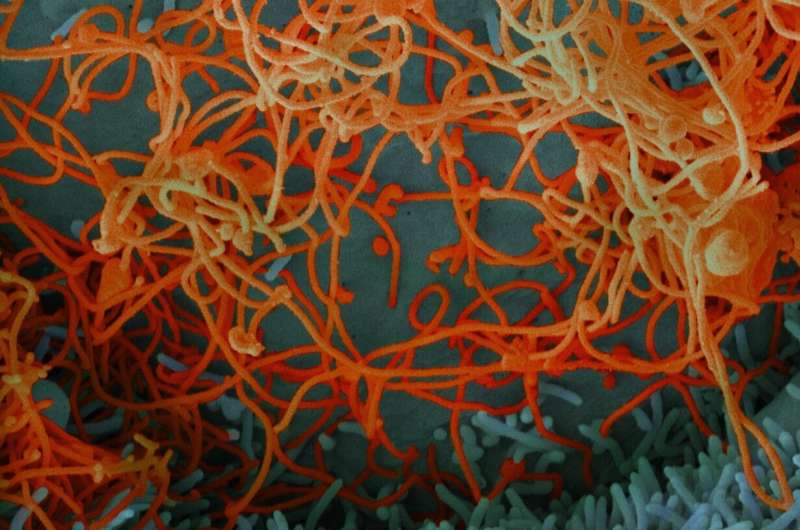This article has been reviewed according to Science X's editorial process and policies. Editors have highlighted the following attributes while ensuring the content's credibility:
fact-checked
peer-reviewed publication
trusted source
proofread
Looking for risky viruses now to get ahead of future pandemics

Most of what scientists know about viruses in animals is the list of nucleotides that compose their genomic sequence—which, while valuable, offers very few hints about a virus's ability to infect humans.
Rather than let the next outbreak take the world by surprise, two virologists say in a Science Perspective article published today (March 10, 2023) that the scientific community should invest in a four-part research framework to proactively identify animal viruses that might infect humans.
"A lot of financial investment has gone into sequencing viruses in nature and thinking that from sequence alone we'll be able to predict the next pandemic virus. And I think that's just a fallacy," said Cody Warren, assistant professor of veterinary biosciences at The Ohio State University and co-lead author of the article.
"Experimental studies of animal viruses are going to be invaluable," he said. "By measuring properties in them that are consistent with human infection, we can better identify those viruses that pose the greatest risk for zoonosis and then study them further. I think that's a realistic way of looking at things that should also be considered."
Warren co-authored the opinion piece with Sara Sawyer, professor of molecular, cellular and developmental biology at the University of Colorado Boulder.
One key message Warren and Sawyer want to get across is that knowing an animal virus can attach to a human cell receptor doesn't paint the whole picture of its zoonotic potential.
They propose a series of experiments to assess an animal virus's potential to infect a human: If it is found to enter human cells, can it use those host cells to make copies of itself and multiply? After viral particles are produced, can they get past human innate immunity? And have human immune systems ever been exposed to another virus from the same family?
Answering these questions could enable scientists to put a pre-zoonotic candidate virus "on the shelf" for further research—perhaps developing a quick way to diagnose the virus in humans if an unattributable illness surfaces and testing existing antivirals as possible treatments, Warren said.
"Where it becomes difficult is that there may be many animal viruses out there with signatures of human compatibility," he said. "So which ones do you pick and choose to prioritize for further study? That's something that needs to be carefully considered."
A decent starting point, he and Sawyer suggest, would be operating on the assumption that viruses with the most risk to humans come from "repeat offender" viral families currently infecting mammals and birds. Those include coronaviruses, orthomyxoviruses (influenza) and filoviruses (causing hemorrhagic diseases like Ebola and Marburg). In 2018, the Bombali virus—a new ebolavirus—was detected in bats in Sierra Leone, but its potential to infect humans remains unknown.
And then there are arteriviruses, such as the simian hemorrhagic fever virus that exists in wild African monkeys, which Sawyer and Warren recently determined has decent potential to spill over to humans because it can replicate in human cells and subvert immune cells' ability to fight back.
The 2020 worldwide lockdown to prevent the spread of COVID-19 is still a fresh and painful memory, but Warren notes that the terrible outcomes of the emergence of SARS-CoV-2 could have been much worse. The availability of vaccines within a year of that lockdown was possible only because scientists had spent decades studying coronaviruses and knew how to attack them.
"So if we invest in studying animal viruses early and understand their biology in more detail, then in the case that they were to emerge in humans later, we'd be better poised to combat them," Warren said.
"We are continually going to be exposed to the viruses of animals. Things are never going to change if we stay on the same trajectory," he said. "And if we stay complacent and only study those animal viruses after they jump into humans, we're constantly going to be working backwards. We'll always be behind."
More information: Cody J. Warren et al, Identifying animal viruses in humans, Science (2023). DOI: 10.1126/science.ade6985. www.science.org/doi/10.1126/science.ade6985
Journal information: Science
Provided by Ohio State University



















